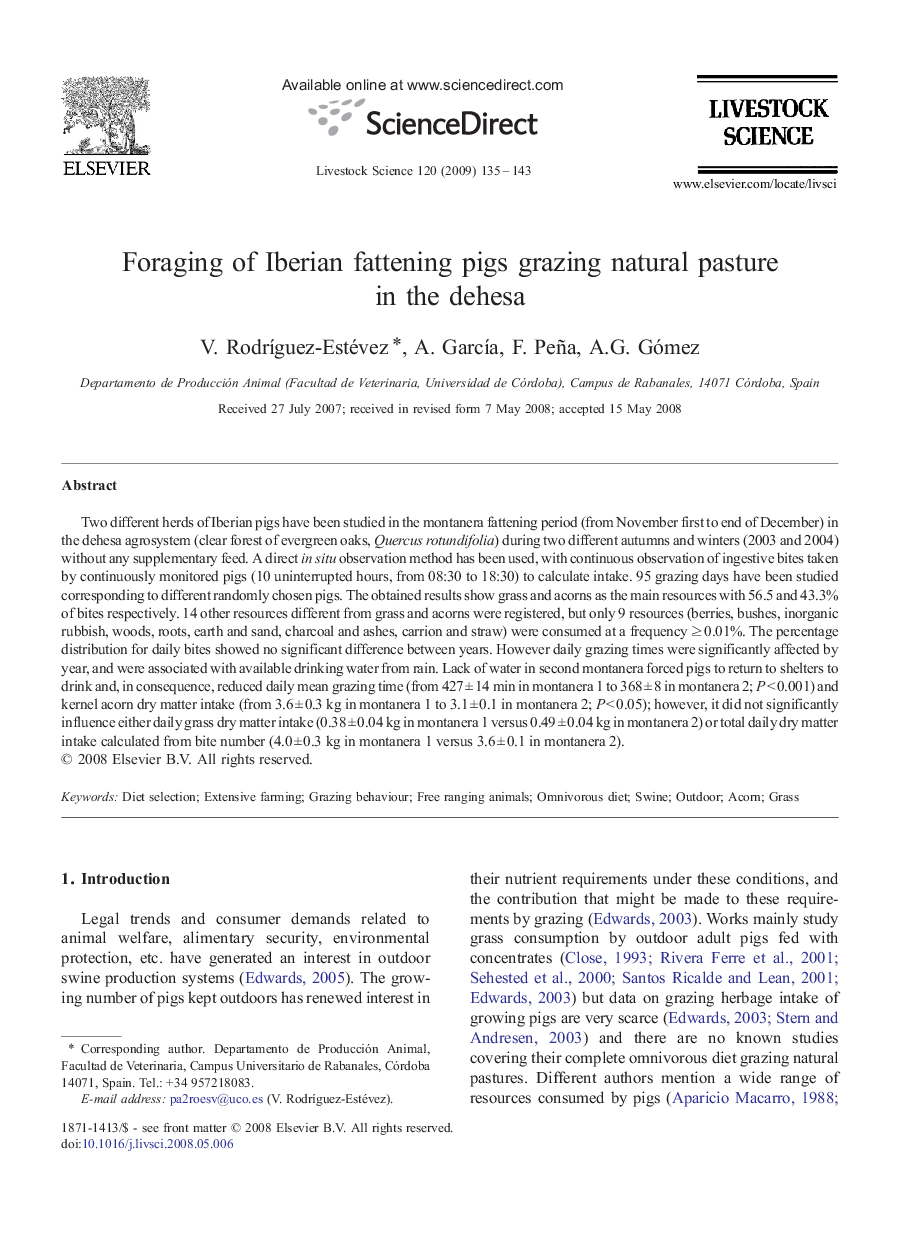| کد مقاله | کد نشریه | سال انتشار | مقاله انگلیسی | نسخه تمام متن |
|---|---|---|---|---|
| 2448341 | 1554013 | 2009 | 9 صفحه PDF | دانلود رایگان |

Two different herds of Iberian pigs have been studied in the montanera fattening period (from November first to end of December) in the dehesa agrosystem (clear forest of evergreen oaks, Quercus rotundifolia) during two different autumns and winters (2003 and 2004) without any supplementary feed. A direct in situ observation method has been used, with continuous observation of ingestive bites taken by continuously monitored pigs (10 uninterrupted hours, from 08:30 to 18:30) to calculate intake. 95 grazing days have been studied corresponding to different randomly chosen pigs. The obtained results show grass and acorns as the main resources with 56.5 and 43.3% of bites respectively. 14 other resources different from grass and acorns were registered, but only 9 resources (berries, bushes, inorganic rubbish, woods, roots, earth and sand, charcoal and ashes, carrion and straw) were consumed at a frequency ≥ 0.01%. The percentage distribution for daily bites showed no significant difference between years. However daily grazing times were significantly affected by year, and were associated with available drinking water from rain. Lack of water in second montanera forced pigs to return to shelters to drink and, in consequence, reduced daily mean grazing time (from 427 ± 14 min in montanera 1 to 368 ± 8 in montanera 2; P < 0.001) and kernel acorn dry matter intake (from 3.6 ± 0.3 kg in montanera 1 to 3.1 ± 0.1 in montanera 2; P < 0.05); however, it did not significantly influence either daily grass dry matter intake (0.38 ± 0.04 kg in montanera 1 versus 0.49 ± 0.04 kg in montanera 2) or total daily dry matter intake calculated from bite number (4.0 ± 0.3 kg in montanera 1 versus 3.6 ± 0.1 in montanera 2).
Journal: Livestock Science - Volume 120, Issues 1–2, January 2009, Pages 135–143